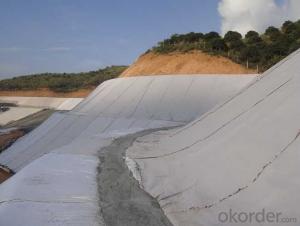Geotextile Design: A Walk Through Invention and Functionality
Since the word “geotextile design” crossed my path for the first time, I have been intrigued by its diverse applications and narrow intricacies of fabric engineering. As a material scientist who loves textiles, I find it stunning how geotextiles combine utility with elegance. This paper discusses geotextile design with respect to its importance, application and creative process in developing technologies.
The Basic Concept in Geotextile Design
More than just being a technical term, geotextile design is an amalgamation of art and science. These fabrics are specifically engineered to perform various functions in civil engineering projects such as reinforcement, filtration and drainage. The design phase requires profound understanding of both environmental conditions in which the geotextile will be used and properties of materials themselves.
Material Innovation
One of the important considerations in geotextile design is choice of materials. Raw materials can greatly influence on geotextiles’ performance as well as durability. Synthetic polymers such as polyester, polypropylene, polyethylene are often used because they are tough and resistant to environmental factors. Nevertheless, biodegradable substances are taken into account at the stage of designing for more sustainable solution.
Building Strength through Fabric
The strength or integrity of a fabric made from this material is determined by the weave structure employed during its production process. There are different types of weaves like plain, twill or satin each having its own significance when used for designing purposes. It must also take into consideration that it should be strong enough but at the same time flexible so that it can resist stresses imposed upon it upon intended use.
A Look at Porosity
Porosity is a critical factor while making decisions about designing a filtering or draining cloth among other things because there are many characteristics associated with such pores on these types fabrics which affect their performance. Designers need to be careful about pore size when developing these materials as they should let water through but prevent soil particles from passing. This balance is critical in sustaining the environment’s form.
Sustainability and the Future of Geotextile Design
The design of geotextiles has developed to respond to more sustainable practices that are being adopted in our society today. The use of biodegradable materials and recycling processes is one area where innovation in this field is taking place. For instance, they take into account the entire lifecycle of a geotextile, from production till disposal so that their products have minimal environmental impact.
Personal Reflections on Geotextile Design
My voyage into geotextile design has been filled with illumination and inspiration. The process of making these fabrics requires creativity and accuracy which made me realize a lot about textiles as well as their uses. It is through these experiences that I felt a connection with this field which shows how passionate one can be while finding new ways for doing things.
Applications above the Ordinariness
Geotextiles do not solely belong to civil engineering; they have spread out their applications across different sectors like agriculture, landscaping or even fashion industry among others. All this shows versatility demonstrated by designers who push forward limits within which these materials operate.
Creating Geotextile Designs
Science, technology mixed up with creative thinking form basis for designing geotextiles. A requirement analysis marks off the beginning of this complex exercise followed by choosing the best material, structural design development and testing of its integrity strength respectively such that despite other considerations at every stage it must remain efficient at all costs
Emotional Effect of Geotextiles Design
My foray into geotextile design has made me realize the emotional impact that these fabrics can have. Being satisfied by seeing a geotextile serve its intended purpose whether it is reinforcing a road or filtering water is remarkably satisfying. This emotional connection to the work is what drives designers to continue pushing the envelope of what’s possible.
Conclusion: The Ever-Evolving World of Geotextile Design
In conclusion, geotextile design as a field keeps on changing as it is driven by innovation, functionality and sustainability. Reflecting back on my trip into geosynthetics world, I am overwhelmed with awe and respect for those designers and engineers who are dedicated their lives in this endeavor. The future for geotextile design looks to be boundless and I am eagerly awaiting where this journey will take us next.







